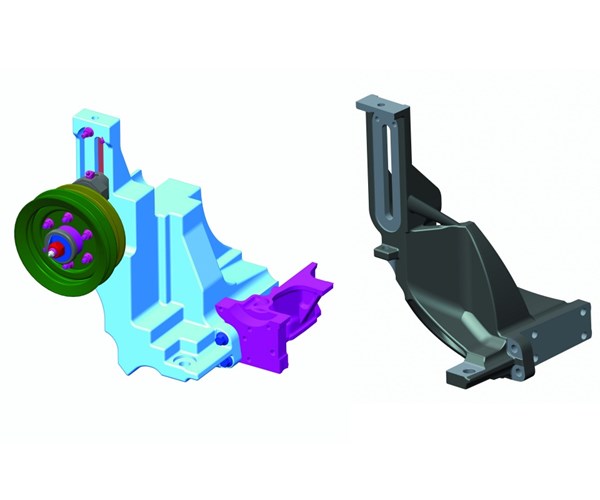Pairing Additive Mfr. and Topology Optimization for Diesel Engine Support Redesign
Topology optimization tends to increase geometric complexity. This isn't a challenge for additive manufacturing.
Share







Hwacheon Machinery America, Inc.
Featured Content
View More

This diesel engine support is conventionally machined out of a solid block (left). Using topology optimization, researchers came up with a lighter version of the part (right) that could be produced via additive manufacturing.
Topology optimization aims to selectively place material in the locations required by a part's function, a process that tends to increase its geometric complexity. This fact makes topology optimization a natural pair with additive manufacturing, which is capable of building almost any such complex shape. Additive powder-bed processes such as selective laser melting (SLM) can create high-resolution, optimized features that would be difficult or impossible to machine. By the same token, topology optimization helps designers remove constraints and take better advantage of the design freedom additive manufacturing offers.
The diesel engine support pictured above is one example of a design made possible by the combination of additive manufacturing and topology optimization. Conventionally machined out of a metal block (left), the engine support connects the powertrain and chassis and supports a cooling system tensioner pulley. To optimize this part, researchers fed data about the support's load and other demands into a finite element model to come up with a lightweight, material-saving form (right) that would be difficult to achieve without additive manufacturing.
Learn more about the redesign process for this diesel engine support in this article from Additive Manufacturing, sister publication to Modern Machine Shop.
Related Content
-
Sunnen Products Company Partners With Hendrick Motorsports
The partnership puts the new Sunnen SV-series honing machine in the Hendrick Motorsports engine operation alongside other Sunnen honing and engine building machines.
-
Faster Programming and Training Helps Automotive Shop Thrive
Features that save on training, programming and cycle times have enabled Speedway Motors to rapidly grow and mature its manufacturing arm.
-
Marposs Celebrates its Past, Eyes Future Opportunities
During its open house in Auburn Hills, Michigan, Marposs presentations focused on future opportunities across growing industries such as EV and semiconductors.

.jpg;width=70;height=70;mode=crop)


































